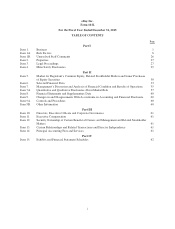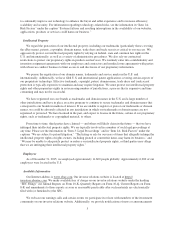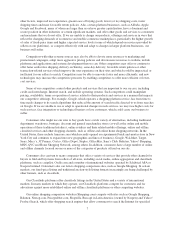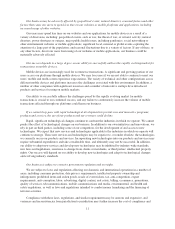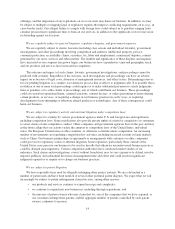eBay 2015 Annual Report Download - page 20
Download and view the complete annual report
Please find page 20 of the 2015 eBay annual report below. You can navigate through the pages in the report by either clicking on the pages listed below, or by using the keyword search tool below to find specific information within the annual report.products. In addition, sellers are increasingly utilizing multiple sales channels, including the acquisition of new
customers by paying for search-related advertisements on horizontal search engine sites, such as Google, Yahoo!,
Naver and Baidu. We use product search engines and paid search advertising to help users find our sites, but
these services also have the potential to divert users to other online shopping destinations. Consumers may
choose to search for products and services with a horizontal search engine or shopping comparison website, and
such sites may also send users to other shopping destinations.
Consumers and merchants who might use our sites to sell goods also have many alternatives, including
general ecommerce sites, such as Amazon and Alibaba, and more specialized sites, such as Etsy. Our
international sites also compete for sellers with general and specialized ecommerce sites. Sellers may also choose
to sell their goods through other channels, such as classifieds platforms. Consumers and merchants also can
create and sell through their own sites, and may choose to purchase online advertising instead of using our
services. In some countries, there are online sites that have larger customer bases and greater brand recognition,
as well as competitors that may have a better understanding of local culture and commerce. We increasingly may
compete with local competitors in developing countries that have unique advantages, such as a greater ability to
operate under local regulatory authorities.
In addition, certain manufacturers may limit or cease distribution of their products through online channels,
such as our sites. Manufacturers may attempt to use contractual obligations or existing or future government
regulation to prohibit or limit ecommerce in certain categories of goods or services. Manufacturers may also
attempt to enforce minimum resale price maintenance or minimum advertised price arrangements to prevent
distributors from selling on our platforms or on the Internet generally, or at prices that would make us less
attractive relative to other alternatives. The adoption by manufacturers of policies, or their use of laws or
regulations, in each case discouraging or restricting the sales of goods or services over the Internet, could force
our users to stop selling certain products on our platforms, which could result in reduced operating margins, loss
of market share and diminished value of our brands.
The principal competitive factors for us include the following:
• ability to attract, retain and engage buyers and sellers;
• volume of transactions and price and selection of goods;
• trust in the seller and the transaction;
• customer service;
• brand recognition;
• community cohesion, interaction and size;
• website, mobile platform and application ease-of-use and accessibility;
• system reliability and security;
• reliability of delivery and payment, including customer preference for fast delivery and free shipping
and returns;
• level of service fees; and
• quality of search tools.
We may be unable to compete successfully against current and future competitors. Some current and
potential competitors have longer operating histories, larger customer bases and greater brand recognition in
other business and Internet sectors than we do.
8



